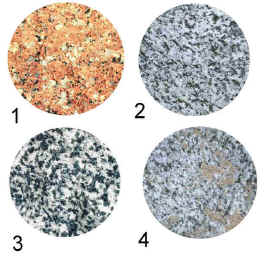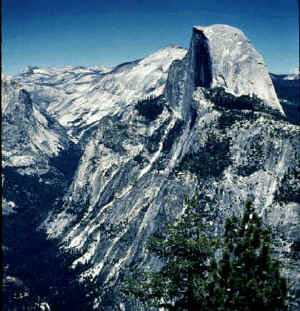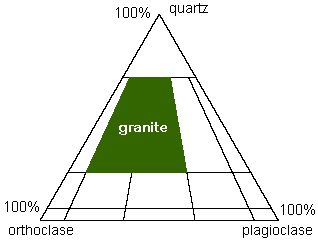|
Granite is light in color because it is composed
largely of minerals that are rich in silica. These include quartz,
feldspar (orthoclase and plagioclase), and muscovite (a mica). Quartz is
clear like glass, feldspars are pink, white, or gray, and muscovite is
silvery. The dark color of granite comes from dark colored minerals,
including hornblende, augite, and biotite (another mica). These minerals
are green, brown, and black in color.
Granites actually come in many different colors.
This variety in granites is caused by differences in mineral
composition, especially in the feldspars. If feldspars are
potassium-rich (orthoclase) the granites may be tan to reddish in color.
If feldspars are calcium-rich (plagioclase) light to dark gray colored.
Looking at the picture sample #1 has more orthoclase, while sample #3
has more minerals like hornblende and plagioclase. The difference
between 2 and 3 is the size of the minerals, while sample #4 has a few
large orthoclase minerals unevenly arranged.

|

Half dome

|